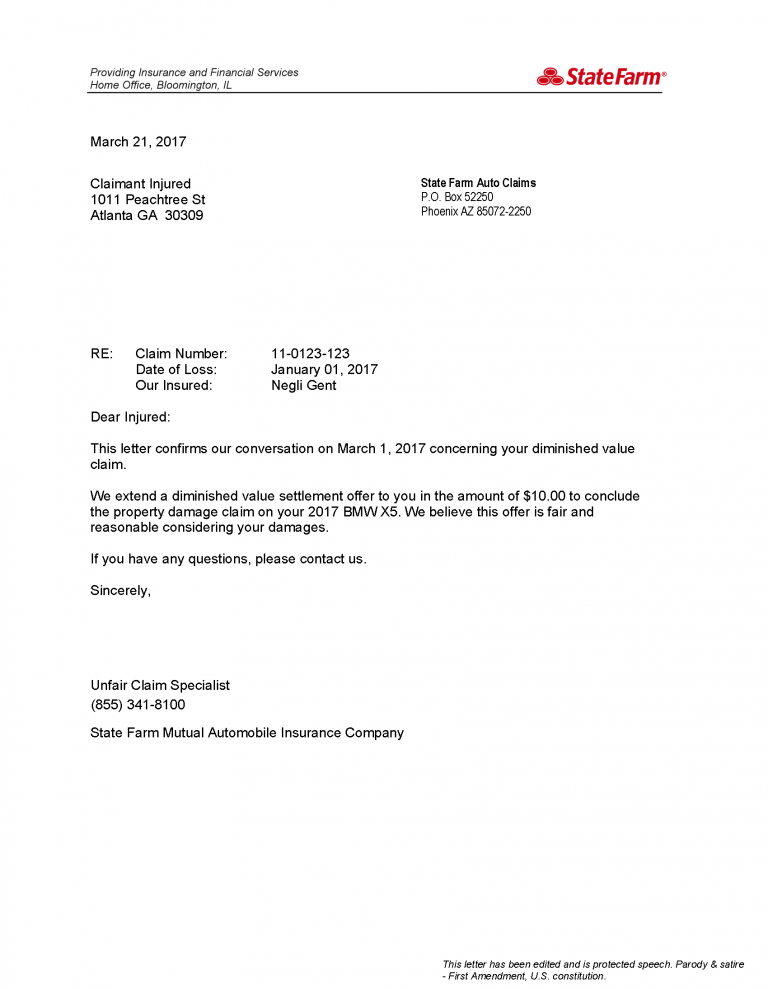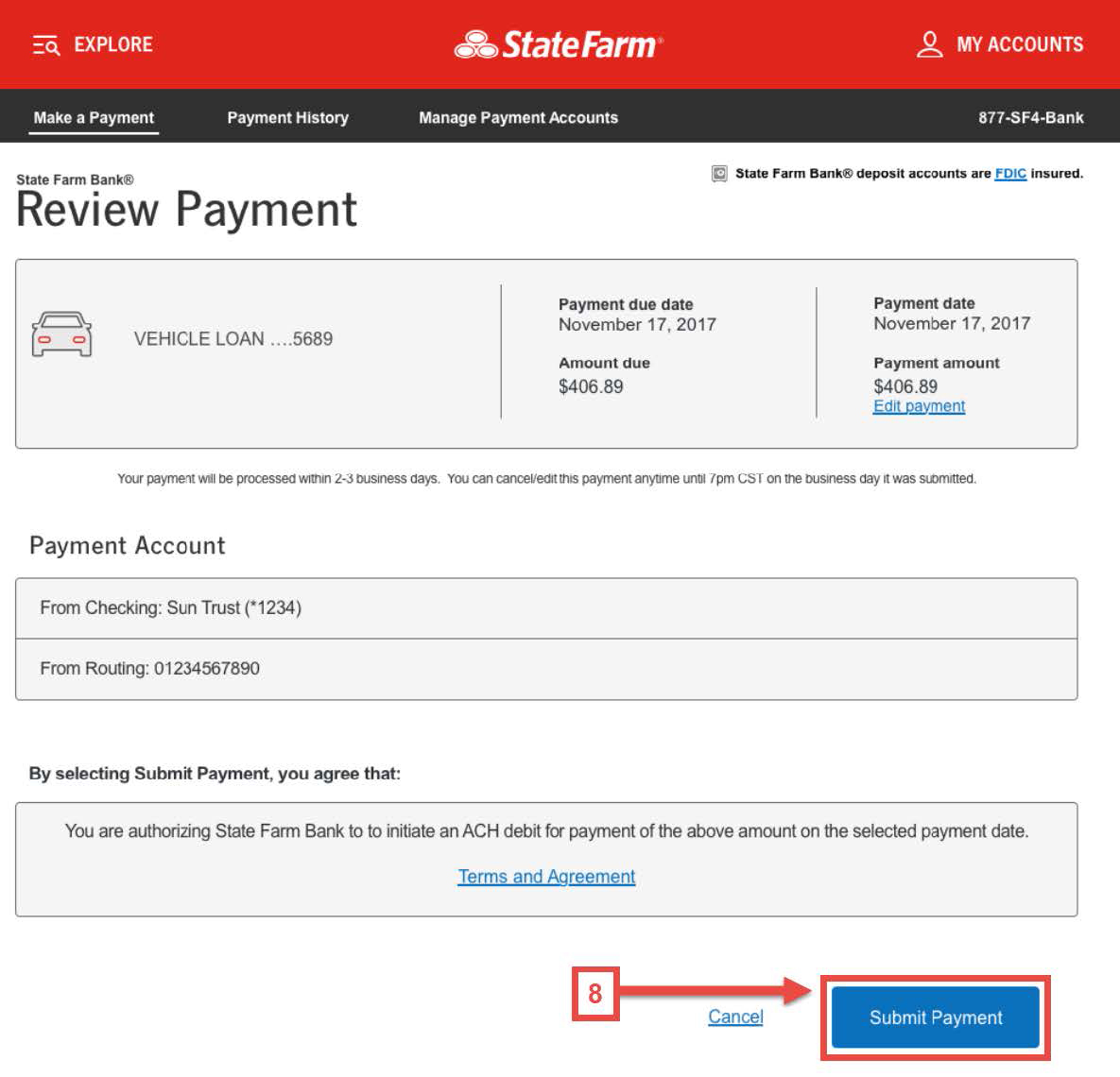State Farm Payment FAQs: Your Guide To Grace Periods & More
Are you navigating the often-complex world of insurance payments, particularly with a company like State Farm? Understanding State Farm's payment policies, including grace periods, autopay options, and potential consequences of late payments, is crucial for maintaining continuous coverage and avoiding unwanted disruptions.
State Farm, a well-known name in the insurance industry, offers a range of policies designed to protect individuals and their assets. However, the details of managing these policies, especially regarding payments, can sometimes be unclear. This article delves into the specifics of State Farm's payment procedures, providing clarity on important aspects such as automatic payments, grace periods, and what to do if you encounter difficulties in making your payments on time.
One of the primary conveniences offered by State Farm is the option to set up automatic payments. This feature allows policyholders to schedule their premium payments to be deducted directly from a bank account or credit card, thereby helping to ensure payments are made on time. It's a simple way to avoid late payment fees and maintain a good payment history, as well as a critical aspect of how the company manages its accounts. The ease of setting up automatic payments can provide considerable peace of mind, particularly for those with busy schedules or a tendency to forget due dates. But even with automatic payments in place, it's essential to understand the nuances of how State Farm handles potential payment issues.
A critical aspect of State Farm's payment system is the grace period. State Farm acknowledges that unexpected financial challenges or unforeseen circumstances can sometimes lead to late payments. Therefore, they provide a grace period, offering a degree of flexibility for policyholders. It's essential to know the length of this grace period, what it covers, and what happens if a payment remains outstanding after the grace period concludes. The grace period is a safety net, designed to prevent immediate policy cancellation and give customers a chance to catch up on their payments without an immediate loss of coverage.
Beyond the grace period, it's also important to be aware of the consequences of not making payments. After the grace period, if the payment isn't received, State Farm will typically issue a notice of cancellation. This notice is the official communication informing the policyholder that their policy is at risk of being terminated. It's a critical juncture, and the steps taken at this point can significantly impact whether the policy remains active. Understanding the implications of this notice and how to respond promptly is essential.
State Farm understands that unexpected financial situations can arise. To help with these situations, the company offers a grace period. This grace period provides a window of time during which a late payment can be made without immediate policy cancellation. The length of the grace period and its precise terms can vary depending on the policy and state regulations, so it's beneficial to clarify the specifics with your State Farm agent or by reviewing your policy documents.
For customers who prefer a more hands-on approach, State Farm offers several alternative payment methods. Policyholders can typically make payments online through their account, using the State Farm mobile app, or even by phone. These various options offer convenience, allowing you to manage your insurance payments at any time and from anywhere. State Farm's commitment to providing various payment options is a clear indicator of their effort to satisfy customer needs and provide flexibility in how policyholders manage their accounts.
It's important to remember that while State Farm offers a grace period and multiple payment options, the ultimate goal is to ensure timely payments. Consistent on-time payments are vital for maintaining continuous coverage. They also prevent potential late fees and any adverse effects on your insurance record. Regularly reviewing your payment schedule and ensuring sufficient funds are available in your account are important steps in managing your policy.
One of the key benefits of enrolling in autopay is avoiding late fees. Many insurance providers charge extra costs for missed payments, but with autopay, you can confirm payments are made on time, and this can contribute positively to your credit score. In addition to the avoidance of late fees, some companies may offer small discounts for opting for paperless billing.
If you are facing financial difficulties, don't hesitate to contact State Farm. They may offer payment plans or help you find ways to lower your premium. Communication is key, and the earlier you address potential payment issues, the better. State Farm's customer service representatives are usually there to help you work out the best path forward.
In the realm of payments and policy management, staying informed is key. Read through your policy documentation, understand the terms and conditions, and make sure you are aware of all the options available to you. By taking a proactive approach and understanding the specifics of State Farm's payment policies, you can maintain continuous coverage and keep your financial relationship with the company in good standing.
If you use online billing and payment, your company entry description (such as M97) value is the last three characters of the trace number of your online file. The amount of payment should equal the total in the remittance detail sent to State Farm.
However, State Farm's custody bank will not accept checks mailed through the post office as payment.
When you set up autopay and confirm that payments are made on time each month, you are taking a step to improve your credit score.
Consider enrolling in automatic payment systems offered by State Farm to facilitate seamless premium payments. Automatic withdrawals can streamline the payment process and reduce the likelihood of missing the grace period deadline.
If you've accepted a digital payout from State Farm via Fiserv Direct Payments and are concerned about delays, check to see when the payout was scheduled, and confirm that the details, such as your bank account information, were correct.
For mail payments, make checks payable to the State Farm Federal Credit Union. Include your name, account, and loan number in the memo line. For overnight mail, follow the same instructions regarding the payee and information to include.
If you are having trouble making your payment, you should contact state farm to discuss your options. They may be able to offer you a payment plan or help you find ways to reduce your premium.
If a claim is filed while the policy is overdue but still within the grace period, state farm generally honors it, provided the balance is paid in full. However, payment must be made before the grace period ends to avoid further consequences.
The easiest actual advice is just ask them for a copy of the cancellation notice. It matters whether you where 2 days late from when the payment was originally due, or whether you were 2 days late from the date of the cancellation.
To avoid late payments and grace periods with state farm, it is important to make your payments on time. State farm offers several convenient payment options, including automatic payments, online bill pay, and mobile app payments.
Always contact your bank or lender before you miss a payment.
If they were not, then state farm had not been paid, and did not have any obligation to provide coverage.


